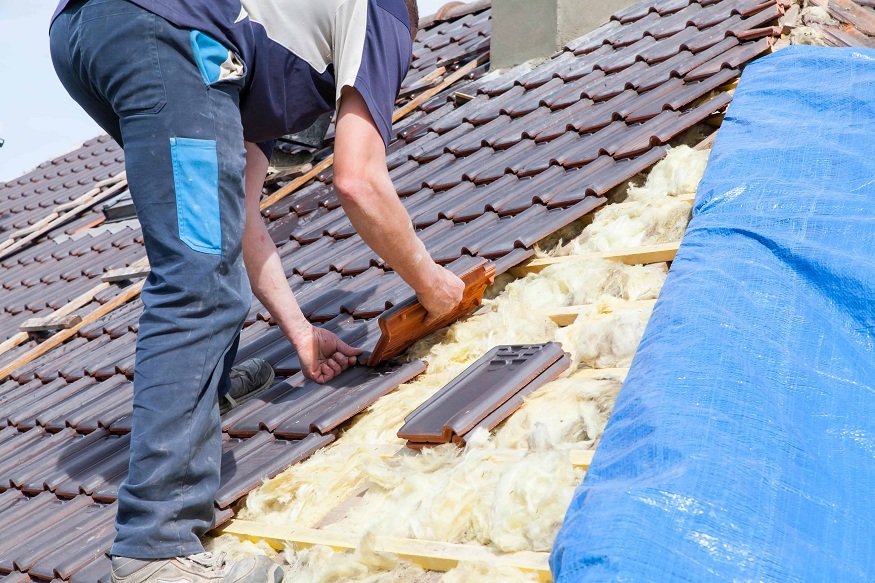Standing in your driveway contemplating a roof replacement, you’re immediately confronted with a bewildering array of material options that seem to multiply with every contractor consultation and online search—asphalt shingles promising affordability, tile roofs radiating Mediterranean elegance, and metal systems touting unprecedented longevity. The decision feels overwhelming because unlike interior design choices that can be changed relatively easily, your roofing material selection commits you to a system that will define your home’s appearance, protection level, and maintenance requirements for the next two to five decades.
The Bay Area’s unique combination of Mediterranean climate, seismic considerations, diverse architectural styles, and premium property values creates specific material performance requirements that make generic roofing advice from other regions largely irrelevant to your decision. Expert contractors who’ve installed thousands of Bay Area roofs possess invaluable insights into how different materials actually perform in local conditions, which systems deliver optimal value for various budget levels, and which choices best complement the region’s distinctive architectural character.
Asphalt Shingles: The Budget-Conscious Professional Choice
Asphalt shingles dominate American roofing for compelling reasons that extend beyond their initial affordability, particularly when considering modern architectural shingle technology that has dramatically elevated both performance and aesthetic appeal from basic three-tab products of previous generations.
Architectural Shingles: Enhanced Performance and Appeal
According to roofing experts at Elm Roofing Contractors, architectural shingles represent the optimal choice for budget-conscious Bay Area homeowners seeking professional-grade performance without the premium costs associated with tile or metal systems. These dimensional shingles feature multiple layers creating depth, texture, and visual interest that dramatically enhance curb appeal compared to flat three-tab shingles. The laminated construction provides superior wind resistance, impact protection, and longevity that justify their modest price premium over basic shingle products.
Bay Area Climate Compatibility
The Bay Area’s moderate temperature range and limited precipitation create ideal conditions for asphalt shingle performance. Unlike regions with extreme heat that accelerates shingle deterioration or areas with persistent humidity promoting algae growth, Bay Area conditions allow quality architectural shingles to achieve their full 25-30 year service life expectancy. The stable climate minimizes the thermal cycling stress that degrades shingles in regions with dramatic temperature swings.
Pros of Asphalt Shingle Systems
The most compelling advantage of architectural shingles is their exceptional cost-effectiveness, typically costing 40-60% less than tile installations and 30-50% less than metal roofing while providing reliable performance spanning multiple decades. Installation efficiency means projects can be completed in days rather than weeks, minimizing disruption to household routines. The extensive color and style variety allows matching virtually any architectural style from traditional to contemporary. Repairs remain straightforward and affordable when individual shingles sustain damage, while readily available materials ensure easy sourcing for future maintenance needs.
Cons and Limitations
Asphalt shingles’ shorter lifespan compared to tile or metal means homeowners will likely replace their roof at least once during home ownership, with possible multiple replacements over extended ownership periods. While quality architectural shingles resist wind and impact well, they remain more vulnerable to severe weather damage than heavier tile or metal alternatives. The petroleum-based composition raises environmental concerns for sustainability-focused homeowners, though recycling programs have improved somewhat. In neighborhoods dominated by tile or other premium materials, asphalt shingles may not provide the aesthetic presence that maximizes property values.
Tile Roofing: The Bay Area’s Signature Choice
Tile roofing has defined Bay Area architecture for nearly a century, earning its iconic status through exceptional longevity, distinctive aesthetic appeal, and performance characteristics perfectly matched to regional climate conditions.
Long-Term Durability and Value
Roofing experts consistently recognize tile as the Bay Area’s premium roofing choice for homeowners prioritizing long-term durability and timeless style. Clay and concrete tile systems routinely deliver 50-100 years of service life, often outlasting the buildings they protect. This exceptional longevity means that tile roofs installed today may never require replacement during your lifetime or even your children’s ownership, fundamentally changing lifecycle cost calculations that initially appear unfavorable compared to less expensive materials.
Bay Area Aesthetic Integration
Tile roofing complements the Spanish Colonial, Mediterranean, and Mission Revival architectural styles that define much of the Bay Area’s residential character. The material’s authentic historical connection to regional architecture creates visual harmony that enhances neighborhood character while providing aesthetic permanence that transcends fleeting design trends. Property value impacts can be substantial in established neighborhoods where tile roofing represents expected standards rather than premium upgrades.
Pros of Tile Roofing Systems
Beyond unmatched longevity, tile provides exceptional fire resistance with Class A ratings that offer maximum protection in wildfire-prone areas. The material’s thermal mass and ventilated installation methods create natural insulation that reduces cooling costs during warm periods. Tile roofs maintain their appearance indefinitely without the fading, weathering, or deterioration that affects other materials, providing consistent curb appeal for decades. The diverse color options, profile styles, and customization possibilities allow precise matching to architectural visions. Tile’s sustainability advantages include natural materials, complete recyclability, and minimal environmental impact during manufacturing compared to petroleum-based alternatives.
Cons and Considerations
Tile’s substantial weight requires proper structural support that some older homes may lack without reinforcement, adding costs to installation projects. The initial investment typically runs 2-3 times higher than quality architectural shingles, creating budget barriers for some homeowners despite superior lifecycle value. Installation complexity demands specialized expertise and typically requires 2-3 times longer than shingle projects. Individual tile replacement, while straightforward for experienced contractors, presents challenges for emergency repairs when specialty tiles may require ordering. Walking on tile roofs requires care and expertise to prevent tile damage, complicating maintenance access for other building systems.
Metal Roofing: Modern Performance Technology
Metal roofing has evolved from utilitarian agricultural applications to sophisticated residential systems offering compelling combinations of longevity, energy efficiency, and contemporary aesthetic appeal.
Advanced Performance Characteristics
Modern metal roofing systems deliver exceptional performance across multiple criteria including 40-70 year service life, superior wind resistance exceeding 140 mph in properly installed systems, and impact resistance that outperforms most alternatives. The Bay Area’s moderate climate prevents the thermal expansion issues that challenge metal roofs in extreme temperature regions, while coastal areas’ salt air demands careful material selection and protective coatings.
Energy Efficiency Leadership
Metal roofing’s reflective properties provide exceptional energy efficiency, particularly with cool roof coatings that reflect up to 70% of solar radiation. This performance significantly reduces cooling costs in warmer Bay Area microclimates while the low thermal mass prevents heat retention that plagues some materials. Many metal systems qualify for ENERGY STAR certification and related utility rebates that offset initial cost premiums.
Pros of Metal Roofing
Metal’s light weight eliminates structural concerns affecting tile installations while facilitating easier installation on complex roof configurations. The material’s fire resistance provides Class A ratings comparable to tile. Environmental advantages include high recycled content, complete recyclability at end of service life, and energy efficiency that reduces ongoing environmental impact. Installation efficiency exceeds tile while providing decades longer service life than asphalt alternatives. Modern metal roofing offers diverse aesthetic options including systems mimicking traditional materials like slate or shake.
Cons and Limitations
Initial costs typically fall between asphalt and tile, creating moderate budget barriers without tile’s extreme longevity justification. Noise during heavy rain concerns some homeowners, though proper installation with adequate insulation largely mitigates this issue. Denting from hail or fallen branches affects some metal types, particularly aluminum and copper, though steel systems resist impact well. Color fading occurs gradually over decades, though quality finishes minimize this degradation. Coastal installations require careful material selection and protective treatments to prevent corrosion from salt air exposure. The contemporary aesthetic may not complement Bay Area’s traditional architectural styles as naturally as tile alternatives.
Expert Recommendations for Bay Area Homeowners
According to Elm Roofing Contractors and other Bay Area roofing experts, material selection should align with specific priorities including budget parameters, longevity expectations, architectural compatibility, and personal preferences for maintenance involvement and environmental impact.
Budget-Conscious Quality: Architectural Shingles
For homeowners seeking professional-grade performance within moderate budgets, quality architectural shingles from manufacturers like GAF provide excellent value through proven 25-30 year performance, attractive appearance, and straightforward maintenance requirements. This choice works particularly well for homes in neighborhoods with mixed roofing materials where tile isn’t expected, or for owners planning to sell within 10-20 years when tile’s longevity advantages aren’t fully realized.
Long-Term Investment: Tile Roofing
Homeowners planning extended ownership in neighborhoods where tile complements architectural character should seriously consider tile despite higher initial costs. The Bay Area’s climate maximizes tile performance while the material’s aesthetic appeal and extreme longevity create superior lifecycle value for long-term ownership scenarios. According to roofing experts, tile represents the Bay Area’s signature choice for combining durability, style, and regional architectural authenticity.
Modern Performance: Metal Systems
Metal roofing suits homeowners prioritizing energy efficiency, contemporary aesthetics, and performance characteristics exceeding asphalt without tile’s weight and cost implications. The material works particularly well for modern architectural styles, homes requiring lightweight solutions, or owners valuing environmental sustainability and minimal maintenance requirements.
Making Your Material Decision
The best roofing material for your Bay Area home depends on careful evaluation of your specific priorities, budget realities, architectural context, and ownership timeline. Working with experienced contractors like Elm Roofing Contractors ensures you receive expert guidance based on thousands of local installations and deep understanding of how different materials perform in Bay Area conditions. Their expertise helps translate general material characteristics into specific recommendations for your unique situation, ensuring your roofing investment delivers optimal performance, appearance, and value for your particular needs and expectations.

